Idea is convert non datetimelike columns to MultiIndex by DataFrame.set_index and then convert columns to datetimes:
df = pd.read_excel('input.xlsx')
df = df.set_index(['id','region'])
df.columns = pd.to_datetime(df.columns, format='%Y%m')
Then create new columns by DataFrame.assign, filter January columns, compare non missing values and get first value by DataFrame.idxmax, then convert to output format by Series.dt.strftime for begin, for end first swap order with indexing ::-1 and get last non missing values, convert to last days of month and last get default value if last column is not missing value by Series.where:
begin = df.loc[:, df.columns.month == 1].notna().idxmax(axis=1).dt.strftime('%Y%m%d')
end1 = df.iloc[:, ::-1].notna().idxmax(axis=1) + pd.offsets.MonthEnd()
end = end1.dt.strftime('%Y%m%d').where(df.iloc[:, -1].isna(), '99991231')
df.columns = df.columns.strftime('%Y%m')
df = df.assign(date_begin = begin, date_end = end).reset_index()
print (df)
id region 201801 201802 201803 201804 201805 201806 201807 \
0 100001 628 NaN NaN NaN NaN NaN NaN NaN
1 100002 1149 27.0 24.0 27.0 25.0 24.0 26.0 27.0
2 100003 1290 26.0 26.0 26.0 26.0 23.0 27.0 27.0
3 100004 955 25.0 26.0 26.0 24.0 24.0 26.0 28.0
4 100005 1397 15.0 25.0 26.0 24.0 21.0 27.0 27.0
5 100006 1397 15.0 25.0 26.0 24.0 21.0 27.0 27.0
201808 ... 201811 201812 201901 201902 201903 201904 201905 \
0 NaN ... 24 20.0 26.0 24.0 26.0 26.0 26.0
1 28.0 ... 24 21.0 26.0 25.0 27.0 24.0 26.0
2 NaN ... 28 NaN 28.0 26.0 27.0 27.0 27.0
3 27.0 ... 24 12.0 NaN NaN NaN NaN NaN
4 26.0 ... 25 NaN NaN NaN NaN NaN NaN
5 26.0 ... 25 23.0 25.0 17.0 NaN NaN NaN
201906 date_begin date_end
0 23.0 20190101 99991231
1 24.0 20180101 99991231
2 25.0 20180101 99991231
3 NaN 20180101 20181231
4 NaN 20180101 20181130
5 NaN 20180101 20190228
[6 rows x 22 columns]
Also is possible create valid datatimes in both new column by Timestamp.max with Timestamp.floor:
df = pd.read_excel('input.xlsx')
df = df.set_index(['id','region'])
df.columns = pd.to_datetime(df.columns, format='%Y%m')
begin = df.loc[:, df.columns.month == 1].notna().idxmax(axis=1)
end1 = df.iloc[:, ::-1].notna().idxmax(axis=1) + pd.offsets.MonthEnd()
end = end1.where(df.iloc[:, -1].isna(), pd.Timestamp.max.floor('d'))
df.columns = df.columns.strftime('%Y%m')
df = df.assign(date_begin = begin, date_end = end).reset_index()
print (df)
id region 201801 201802 201803 201804 201805 201806 201807 \
0 100001 628 NaN NaN NaN NaN NaN NaN NaN
1 100002 1149 27.0 24.0 27.0 25.0 24.0 26.0 27.0
2 100003 1290 26.0 26.0 26.0 26.0 23.0 27.0 27.0
3 100004 955 25.0 26.0 26.0 24.0 24.0 26.0 28.0
4 100005 1397 15.0 25.0 26.0 24.0 21.0 27.0 27.0
5 100006 1397 15.0 25.0 26.0 24.0 21.0 27.0 27.0
201808 ... 201811 201812 201901 201902 201903 201904 201905 \
0 NaN ... 24 20.0 26.0 24.0 26.0 26.0 26.0
1 28.0 ... 24 21.0 26.0 25.0 27.0 24.0 26.0
2 NaN ... 28 NaN 28.0 26.0 27.0 27.0 27.0
3 27.0 ... 24 12.0 NaN NaN NaN NaN NaN
4 26.0 ... 25 NaN NaN NaN NaN NaN NaN
5 26.0 ... 25 23.0 25.0 17.0 NaN NaN NaN
201906 date_begin date_end
0 23.0 2019-01-01 2262-04-11
1 24.0 2018-01-01 2262-04-11
2 25.0 2018-01-01 2262-04-11
3 NaN 2018-01-01 2018-12-31
4 NaN 2018-01-01 2018-11-30
5 NaN 2018-01-01 2019-02-28
[6 rows x 22 columns]

